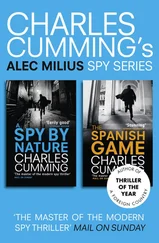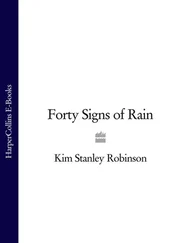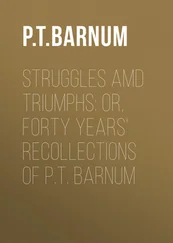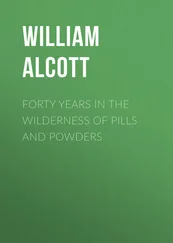Leslie Ward - Forty Years of 'Spy'
Здесь есть возможность читать онлайн «Leslie Ward - Forty Years of 'Spy'» — ознакомительный отрывок электронной книги совершенно бесплатно, а после прочтения отрывка купить полную версию. В некоторых случаях можно слушать аудио, скачать через торрент в формате fb2 и присутствует краткое содержание. Издательство: Иностранный паблик, Жанр: foreign_prose, foreign_home, visual_arts, на английском языке. Описание произведения, (предисловие) а так же отзывы посетителей доступны на портале библиотеки ЛибКат.
- Название:Forty Years of 'Spy'
- Автор:
- Издательство:Иностранный паблик
- Жанр:
- Год:неизвестен
- ISBN:нет данных
- Рейтинг книги:4 / 5. Голосов: 1
-
Избранное:Добавить в избранное
- Отзывы:
-
Ваша оценка:
- 80
- 1
- 2
- 3
- 4
- 5
Forty Years of 'Spy': краткое содержание, описание и аннотация
Предлагаем к чтению аннотацию, описание, краткое содержание или предисловие (зависит от того, что написал сам автор книги «Forty Years of 'Spy'»). Если вы не нашли необходимую информацию о книге — напишите в комментариях, мы постараемся отыскать её.
Forty Years of 'Spy' — читать онлайн ознакомительный отрывок
Ниже представлен текст книги, разбитый по страницам. Система сохранения места последней прочитанной страницы, позволяет с удобством читать онлайн бесплатно книгу «Forty Years of 'Spy'», без необходимости каждый раз заново искать на чём Вы остановились. Поставьте закладку, и сможете в любой момент перейти на страницу, на которой закончили чтение.
Интервал:
Закладка:
Before I proceed any further with the reminiscences of my school-days and after, I should like to recall a few memories of the men and women who visited the studios of my parents. Artists of course predominated, and amongst the latter were men who distinguished themselves in the world. Many of them, through no fault of their genius, have lost some of their shining reputation. Others, who were merely popular painters of the hour, are forgotten. Again, a few who were somewhat obscure in their lifetime, have gained a posthumous reputation, and still others have to await recognition in the future.
It is an age of reactions. Just as the pre-Raphaelite movement "revolted" against the academic art preceding it, so the photographic idealism of pre-Raphaelitism was superseded by a reaction in art resulting and undoubtedly profiting by its really fine example. I will not go as far as to say Whistler gained by the pre-Raphaelites; but his art assuredly became all the more conspicuous by contrast, and perhaps his school is indirectly responsible for the latest reaction in favour of raw colour. In the "back to the land" style of painting which we find in favour with a few modern artists, abnormal looking women are painted with surprising results, and these artists seem to delight in a sort of blatant realism that becomes nauseous. With passionate brutality they present their subjects to us, and their admirers call the result "life." Let us have truth by all means, and let us not, on the other hand, lapse into the merely pretty; but let the truth we portray be imaginative truth allied to beauty.
That reminds me of the "plum-box" artist, who used to go round to country houses when I was a boy, with a completed painted picture of what was then considered the ideal and fashionable face, which consisted mainly of big eyes, veiled by sweeping lashes, a perfect complexion, a rosebud mouth, and glossy curls. The artist (one feels more inclined to call him the "tradesman") then superimposed the features of his sitter upon this fancy background, and the result invariably gave great pleasure and satisfaction.
Nowadays it has become the fashion or the pose of the moment to decry the works of the Victorians as old-fashioned, and in many cases with undoubtedly good reason; but unfortunately the best work is often included in the same category. In the rage for modernity, culminating in "post-impressionism," "futurism," and other "isms," in art, literature, the stage, and, I believe, costume, the thorough and highly conscientious work of some of our greatest men has become obscured; they are like the classic which nobody reads, and they stand unchallenged, but unnoticed except by the very few. Perhaps their genius will survive to-day's reactionary rush into what is sometimes described as individualism, and the worship of personality before beauty, which, if carried to excess as it is to-day, seems to verge into mere charlatanism. We are a little too near the great ones to see them clearly, and perhaps they can only be judged by their peers. Sometimes I see the casual onlooker glance at, sum up, and condemn, pictures which I know represent the unfaltering patience of a lifetime, combined with a passionate idealism of motive. The abundance of art schools, the enormous reduction in prices, the overwhelming commercialism which sets its heel upon the true artist, to crush him out of existence unless he compromises with art, all combine to render the art and artist in general widely different from the men of my early days. True, the Victorian came at a great moment, and now more than ever, if I may misquote: "art is good … with an inheritance."
Among the innumerable artists I knew during my later school-days, Maclise stands out a massive figure and a strong personality. He reminded me in a certain grand way of a great bull; his chin was especially bovine; it was not exactly a dewlap or a double chin, but a heavy gradation of flesh going down into his collar. In the National Portrait Gallery there is a portrait by my father of Maclise as a young man.
His work is to me typical of the man: he was a magnificent draughtsman, a cartoonist of fine ideas. In the National Collection at Kensington there are some beautiful pencil drawings by him of various celebrities of the day, and they are perfect in line and study of character. In the Royal Gallery of the House of Lords may be seen his "Battle of Waterloo" and "Death of Nelson," which are extremely masterly in drawing and composition. But in my opinion he lost his charm of line when he attempted paint, for his colouring is unsympathetic and the effect is hard. His crudity of colour is not so noticeable, however, in the frescoes as in his oil-paintings.
Sir Edwin Landseer was an artist who, like Maclise, received large sums for his pictures. He was considered one of the greatest painters of the day, but I am afraid it is no longer the fashion to admire him, although his best works must always hold the position they have deservedly won. I wonder how many people remember that the lions in Trafalgar Square were designed by our great animal painter.
"The Sleeping Bloodhound" stands out amongst Landseer's pictures as a masterpiece. It was painted in two hours from the dead body of a favourite hound.
It is curious that in many instances, especially of early work, his colour was very rich, and that in his later work his feeling for colour seems to have weakened.
Tom Landseer no doubt contributed largely to his brother's reputation by his masterly fine engravings of Sir Edwin's pictures, which were sometimes unsatisfactory in colour and gained in black and white.
Herbert, whose name was prominent through his fresco of "Moses breaking the Tablets," was quite a character in those days. I remember he always spoke with what appeared to be a strong French accent, although it has been said he had never been abroad in his life. The story went that, going to Boulogne he stepped from the boat … slipped … and broke his English. Later in life he worked himself "out," and his Academy pictures of religious subjects became very grotesque and quite a laughing-stock. I am afraid this type of work needs a watchful sense of humour and a powerful talent to preserve its gravity.
Mulready was an artist whose character showed in strong contrast to that of Herbert. He was the dearest of old men; I can see him now with his superb old head, benevolent and yet strong. He painted that indisputably fine picture, "Choosing the Wedding Gown," now in the National Collection at the Kensington Museum. Although the subject will not be viewed with sympathetic interest by many of the present generation, its worth is undoubted. His work is completely out of date, but I remember one curious fact in connection with his crayon drawings, which hung upon the walls of the Academy Schools; when Leighton visited there, he had these drawings covered over, because they were extremely antagonistic to his own teaching.
David Roberts, who was then considered the greatest painter of interiors, began life as a scene painter, as did Stanfield who was his contemporary and a very powerful sea painter. Both men were Royal Academicians, as was Edward Cooke, an artist of less power than Stanfield, but of not much less distinction, imbued with the spirit of the old Dutch painters of sea and ships. He lived to a ripe old age with his two sisters, but perhaps the youngest in appearance and manner of the four was his wonderful old mother, who died when she was close upon a hundred.
Then there were Burgess and Long who painted Spanish subjects. Long was best known, however, by his picture of the "Babylonian Marriage Mart," and Burgess as a young man sprang into fame with his picture called "Bravo Toro." Like almost every other artist, Long took to portrait painting, and his pictures became a great financial success; but his portraits were not for the most part successful from an artist's point of view.
Читать дальшеИнтервал:
Закладка:
Похожие книги на «Forty Years of 'Spy'»
Представляем Вашему вниманию похожие книги на «Forty Years of 'Spy'» списком для выбора. Мы отобрали схожую по названию и смыслу литературу в надежде предоставить читателям больше вариантов отыскать новые, интересные, ещё непрочитанные произведения.
Обсуждение, отзывы о книге «Forty Years of 'Spy'» и просто собственные мнения читателей. Оставьте ваши комментарии, напишите, что Вы думаете о произведении, его смысле или главных героях. Укажите что конкретно понравилось, а что нет, и почему Вы так считаете.












